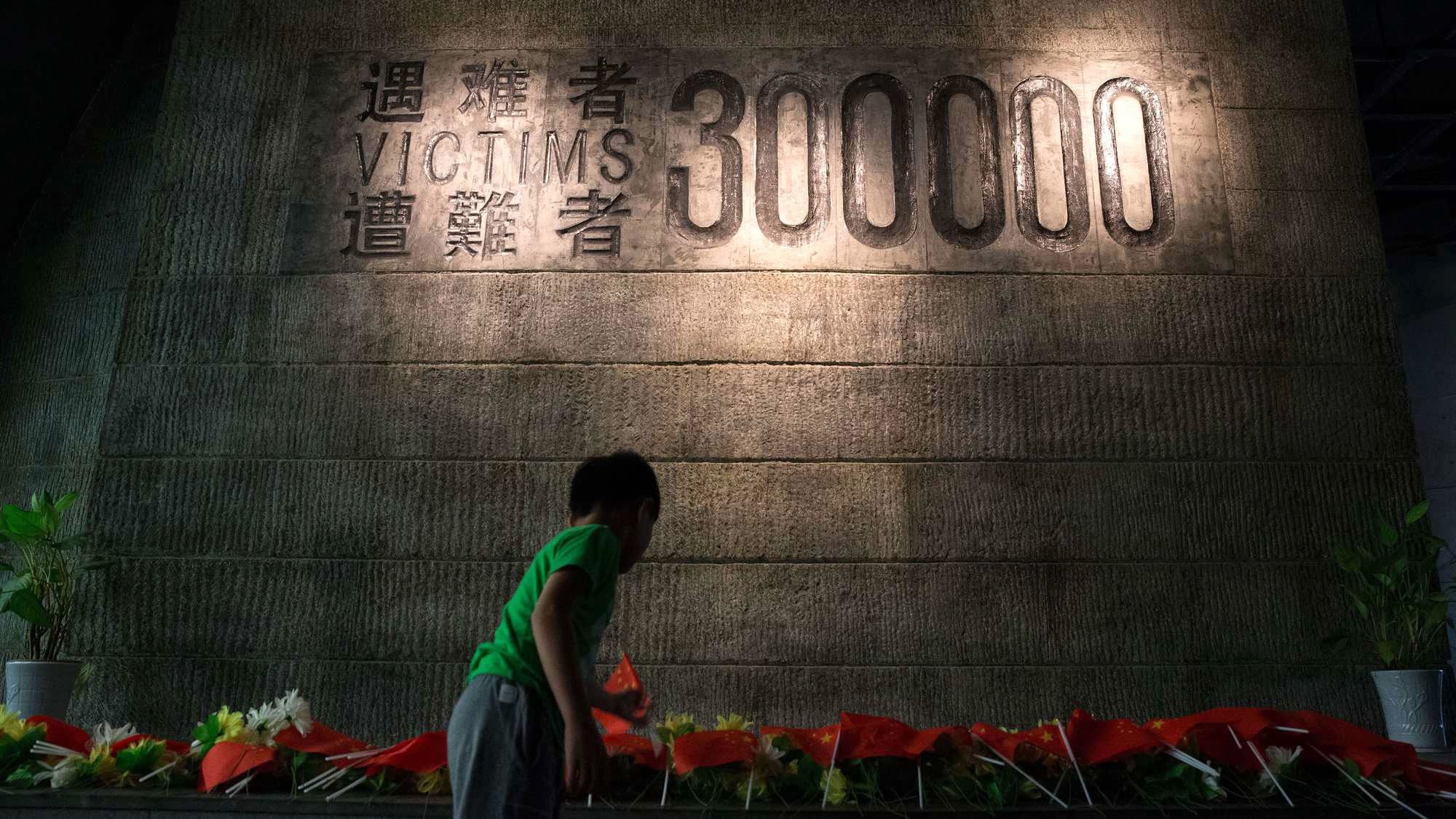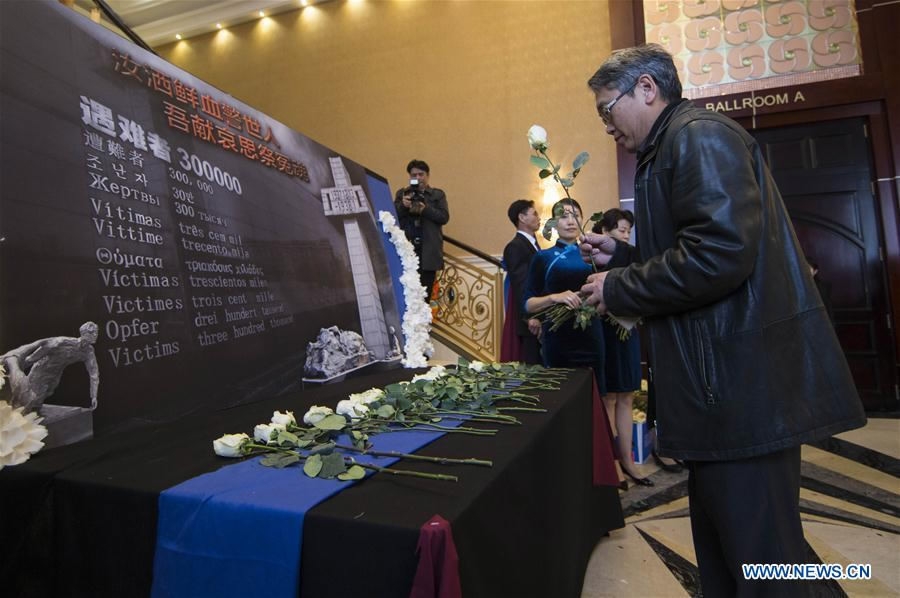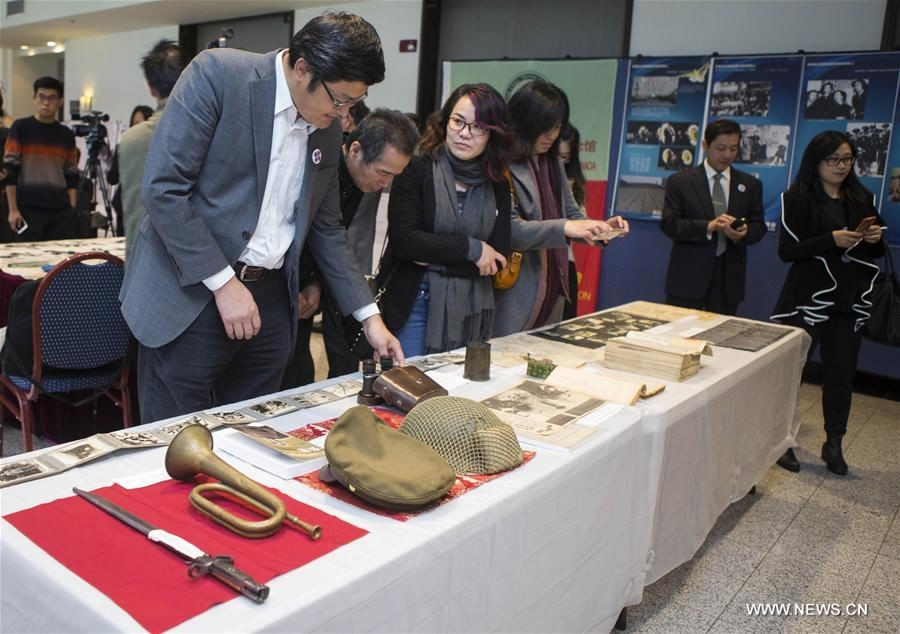
Opinions
12:44, 11-Dec-2017
Eighty years ago: The heroic defense of Nanjing
Guest commentary by Peter Harmsen

On December 12, 1937, as Japanese artillery was raining down over the east China city of Nanjing, Chinese Army officer Liu Shuwan was busy evacuating his men on barges across the Yangtze River to safety on the opposite shore. Four young soldiers refused to leave the city. “The enemy is that way,” the soldiers told Liu, pointing towards the Japanese lines. Liu realized it was futile to persuade the young patriots to abandon Nanjing, and he gave them permission to stay behind. He never heard from them again, and in all likelihood they died fighting for the city.
The battle of Nanjing in late 1937 is mainly known today because of the horrific slaughter of prisoners and civilians committed by the Japanese Army after the fall of the city. However, there is also another reason why the event ought to be remembered, as suggested in the story about Liu and the four young soldiers: the heroism with which the Chinese Army defended Nanjing and its citizens, despite terrifying odds, remains a source of inspiration to this day.

A visitor presents a flower during a Commemorative Day Ceremony for the 80th Anniversary of the Nanjing Massacre in Toronto, Canada, December 9, 2017. More than 1,000 people took part in the ceremony on Saturday. /Xinhua Photo
A visitor presents a flower during a Commemorative Day Ceremony for the 80th Anniversary of the Nanjing Massacre in Toronto, Canada, December 9, 2017. More than 1,000 people took part in the ceremony on Saturday. /Xinhua Photo
A growing number of western historians agree that for many decades their understanding of World War Two was curtailed by insufficient attention to the China theater. As the importance of China as an Allied participant in the war is becoming more widely acknowledged, the realization is also sinking in that World War Two arguably began in 1937 with Japan’s full-scale invasion of China, rather than in 1939 with Germany’s attack on Poland.
In this perspective, the Nanjing campaign, which started in mid-November 1937 and lasted for about one month, is one of the early chapters in the global history of the war. It gives China a special place among the Allies as the first nation that actively resisted the ceaseless expansionary drive of the powers that were later to officially band together in the Axis – Japan, Germany, and Italy.
Some people in the West may still believe that Japan’s offensive in the lower reaches of the Yangtze River in late 1937 was a push-over, but even a cursory understanding of the military events at the time makes clear that this was not the case. It may be that by late 1937, the Japanese side enjoyed a definite technological advantage, especially in terms of planes and tanks. Still, time and again on the way from Shanghai to Nanjing, Chinese forces succeeded in slowing down the Japanese advance.

People visit a memorial exhibition of Nanjing Massacre in Toranto, Canada, on December 8, 2016. /Xinhua Photo
People visit a memorial exhibition of Nanjing Massacre in Toranto, Canada, on December 8, 2016. /Xinhua Photo
The culmination of the entire Nanjing campaign was the battle for the huge ancient walls surrounding the city. Combat was uniformly fierce, especially around the city gates, which were veritable fortresses and caused the Japanese attackers huge problems, even with the aid of modern military technology, including well-equipped field artillery.
In short, the Japanese conquest of the Chinese heartland did not come cheap. Japanese sources suggest that many Japanese units suffered huge casualties during their advance towards Nanjing. One of them, the 9th Division with just short of 20,000 soldiers at the start of the war, is reported to have had 4,500 men killed and nearly 14,000 injured during the fall and winter of 1937.
The Chinese side, of course, paid dearly too. Some of the nation’s best divisions, which had been built up during long years of preparation during the 1930s, were virtually wiped out. The elite of the elite, the 87th and 88th Divisions, were virtually annihilated. Each division had 15,000 to 20,000 soldiers at the start of the war, but by the time Nanjing had fallen, 1,000 survived from the 88th, and a mere 300 from the 87th.

People visit the Relics and Historical Materials of the Nanjing Massacre Exhibition at Chinese Cultural Centre of Greater Toronto in Toronto, Canada, October 28, 2017. /Xinhua Photo
People visit the Relics and Historical Materials of the Nanjing Massacre Exhibition at Chinese Cultural Centre of Greater Toronto in Toronto, Canada, October 28, 2017. /Xinhua Photo
Thousands of Chinese men gave their young lives for the nation in the terrible struggle for Nanjing. They died for another cause as well. They brought the first major sacrifices in the global conflict that would last eight more years and only end with the final defeat of the Axis in 1945. This gives added meaning to the tragedy of Nanjing in the dark winter of 1937.
(The author is the writer of two books about China in World War Two. The most recent one, Nanjing 1937: Battle for a Doomed City had just been published in Chinese under the title 南京1937:血战危城 and under my Chinese name 何铭生. He studied history at National Taiwan University and has been a foreign correspondent in East Asia for two decades. He has focused mainly on the Chinese-speaking countries, but has reported from nearly every corner of the region, including Mongolia and North Korea. His books have been translated into Chinese and Romanian. The article reflects the author’s opinion, not necessarily the views of CGTN.)

SITEMAP
Copyright © 2018 CGTN. Beijing ICP prepared NO.16065310-3
Copyright © 2018 CGTN. Beijing ICP prepared NO.16065310-3